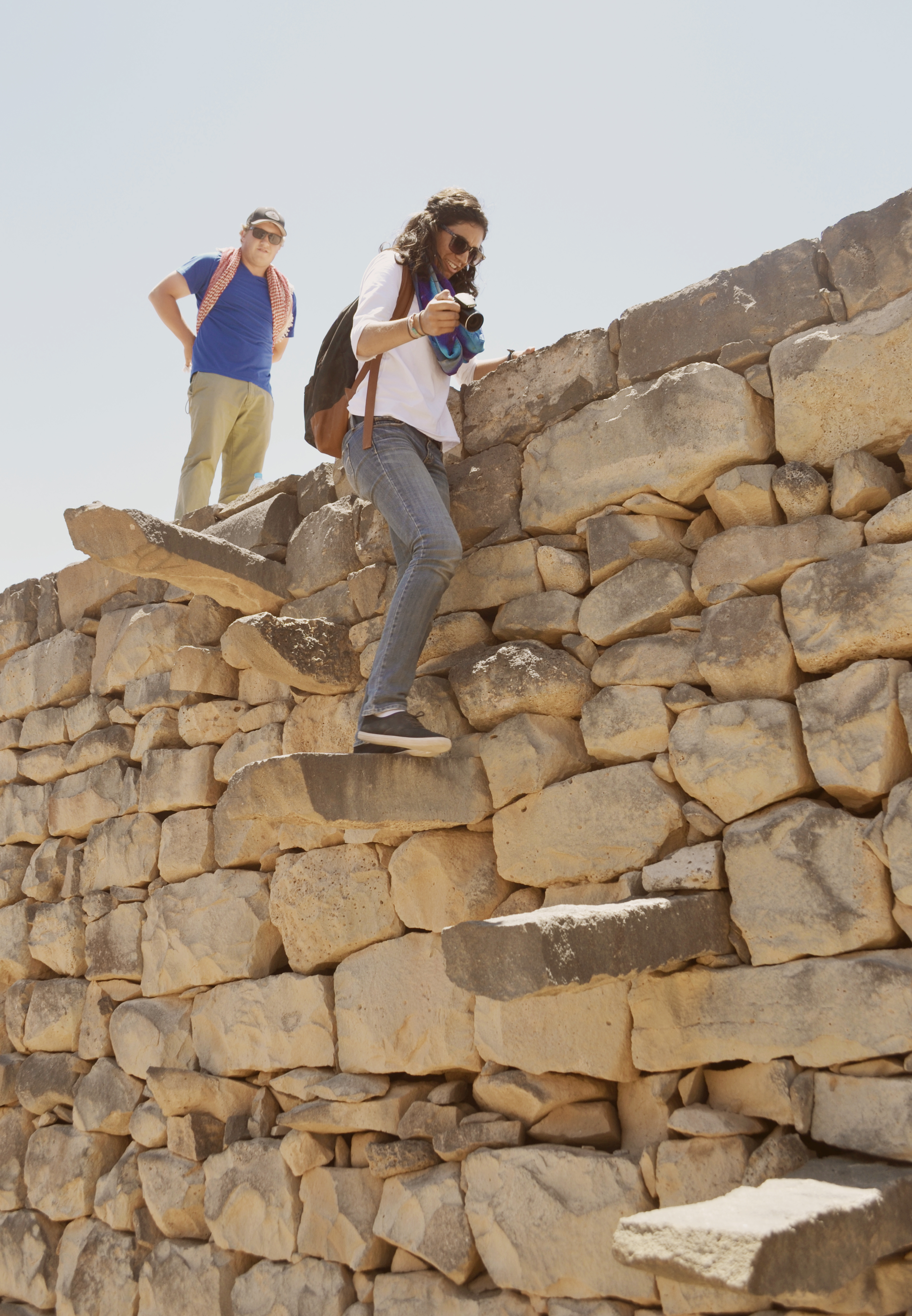By Jude Olszewski
The fourth field trip was not too far from home on Saturday the 14th of June, as most of the sites were located in the city of Amman and the surrounding desert to the east. We began the day at 8 am, and got to the King Abdullah I Mosque in Amman. Us females were asked to put on these lovely, dark coloured gowns (mine was shiny), and the entire group entered the mosque. It was built as a memorial to the grandfather of King Hussein and had a fairly hefty amount of money put into its construction, over 6 million dollars! The octagonal prayer room was beautiful, sitting directly under the blue dome that represents the sky. We managed to take a few photos and then moved on to the next location.
Not too many kilometres further was the Citadel. In addition to the unreal view of Amman from the edge of the fortification walls, the site itself was quite impressive. The Roman Temple of Hercules, or what was left of it, was first. Still standing are the massive columns and the podium. After a few photos pretending to be (a weak) Hercules next to the columns, the Archaeological Museum was next. The Neolithic statues from Ain Ghazal were featured within it. For the other students participating in the Field School, these should look familiar: look at the cover photo on your Jordan textbook! The rest of the site had a beautiful Byzantine church and mosque, but time was running short, so we moved on.
We arrived at the Roman Amphitheatre (which is actually a theatre—there’s a difference) a few minutes later, and most people began scaling the stairs to the top. We received a quick show from dear Nick and his angelic voice, or at least I heard him singing Sinatra like a god, and then began driving out to the desert. Our first castle was Qasr Azraq, which was a large basalt building from the Hellenistic and Roman periods, also used by T. E. Lawrence as a base during the Arab Revolt in 1917. This is also the castle that I slammed my head on a rock by pretending to be Lawrence, and where everyone climbed the walls, and some very precarious stairways made of basalt slabs protruding from the exterior walls of a building.
Qusayr Amra, our second desert palace, was not seen entirely unfortunately, because conservation is still underway. However, the well-preserved frescoes we could view within the Audience Hall were something else; they completely covered the walls and ceilings.
Our final destination was Qasr Kharana, where the climbing continued. The function of this building is not entirely known, but the connecting “apartments” were seemingly endless. The view of the surrounding the desert was also incredibly impressive. In fact, it was beautiful, just like the rest of Jordan!
The trip wrapped up in the late afternoon, and let me tell you, the rest of the day involved a lot of sleeping because the 4 am wakeup call was awaiting us the following day.

